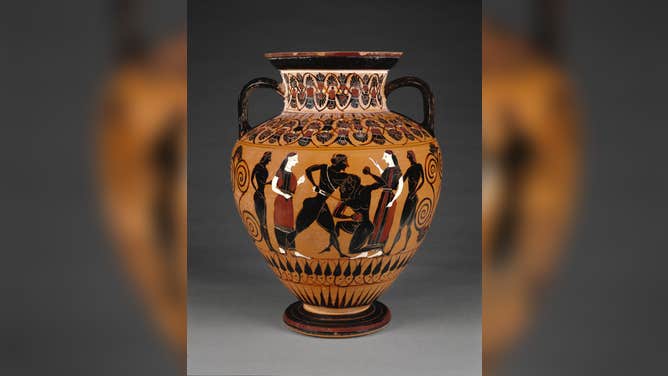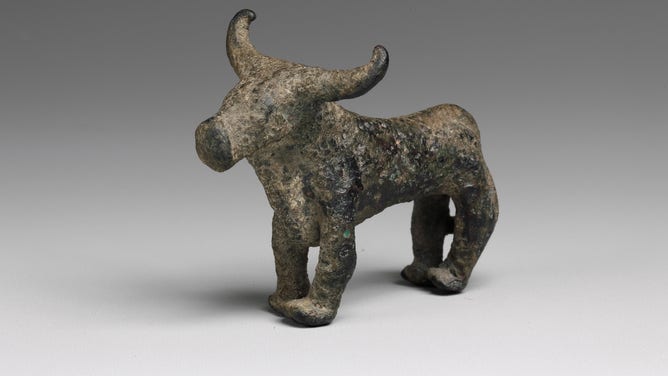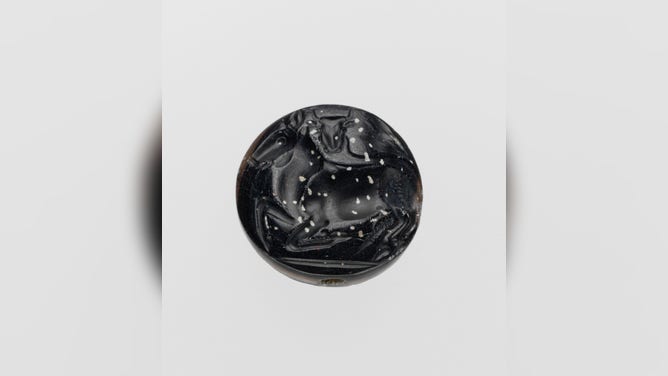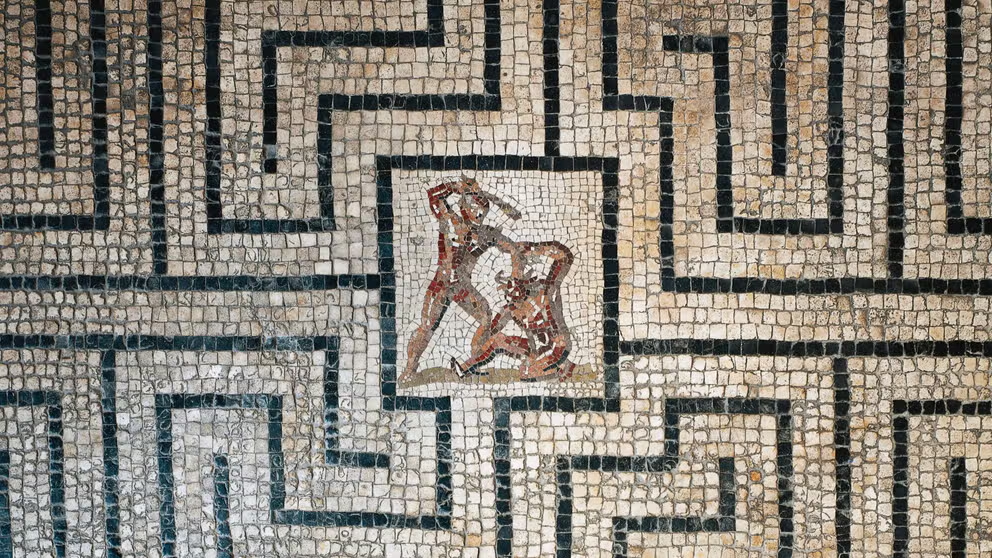How corn mazes are echoes of ancient legends and traditions
The larger-than-life puzzles of fall are connected to age-old stories, such as one about a king, a hero and a Minotaur
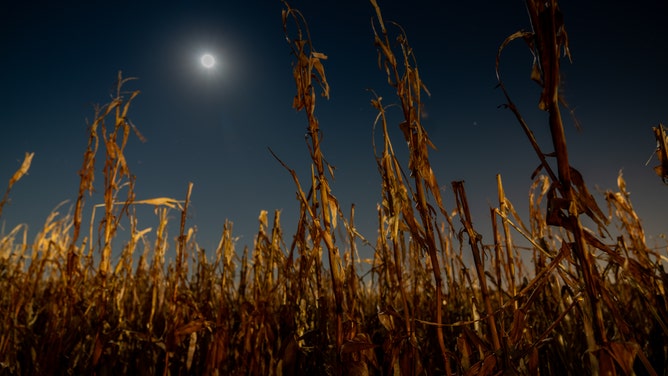
The moon shines high above the Colony Pumpkin Patch corn maze in North Liberty, Iowa.
(Katie Colony)
It sounds like something out of a dream.
To your left and right are walls of golden stalks, standing at 14 feet tall. You can’t see above them nor can you see through, but this field of gold parts right in front of you, creating a tantalizing path that leads to an adventure.
For many folks this fall, this dream becomes a sought-after reality.
Living the dream
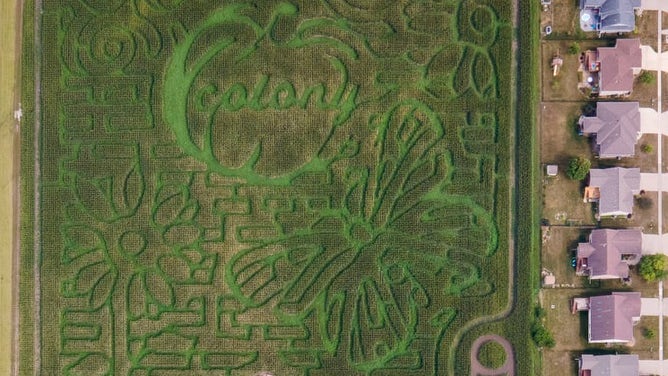
Colony Pumpkin Patch features a new corn maze design every year. This year's design was inspired by an event titled "Blooms and Butterflies", hosted by the non-profit No Foot Too Small.
(Katie Colony)
"I think it comes down to tradition and having some of those special times with family, year after year.," said Katie Colony, co-owner of Colony Pumpkin Patch in North Liberty, Iowa.
Located in the country’s top corn-producing state, Colony Pumpkin Patch is a family-owned, agri-tourism farm that hosts a corn maze as one of its attractions. According to Colony, the maze covers nearly ten acres — that’s almost as large as ten football fields.
"You could be in there for a couple hours or you could be in there for 20 minutes," said Colony. "I always say it totally depends on you."
Visitors ranging from families to charities to sorority groups have come out to experience the maze. Because of its popularity, the Colony family has added an annual fall 5K to the attraction, along with a chance to experience the maze in the dark of night.
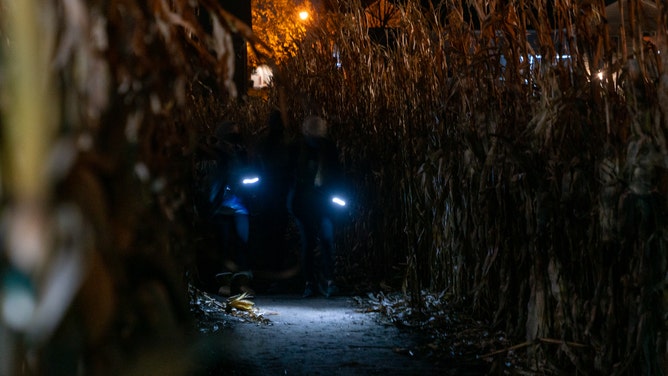
Visitors to the Colony Pumpkin Patch challenge themselves to the Flashlight Maze, a chance to explore the 10-acre corn maze in the dark.
(Katie Colony)
While corn mazes have become a sweet fall tradition for many folks today, the origins of mazes — these larger-than-life puzzles waiting to be solved — have far more spiritual and complex roots.
Their journey from austerity to fun activity is thousands of years in the making, and one that’s just as circuitous as the mazes themselves.
Mediterranean maze
Mazes, along with their equally enigmatic cousins the labyrinths, have been built around the world throughout history.
"It's part of the shared culture of all humanity," said Adam Rappold, Brock University professor of Classics, the study of ancient Greece and other Mediterranean cultures in antiquity.
"I really do think that this idea, these sort of complex patterns that are meant to draw you into a center point as almost like a meditation and ones that are meant to be a challenge to overcome, is something that appeals to the core human psyche."

Visitors make their way to the center of a maze.
(Susan Q. Yin / Unsplash)
According to Rappold, while cultures around the world independently invented traditions of mazes and labyrinths, the idea of mazes as understood in Western culture originated in stories told by the ancient Greeks.
In particular, the Greeks told tales of a people called the Minoan civilization. They lived on the neighboring island of Crete between 3,000 B.C. and 1400 B.C., predating the Greeks by about a thousand years.
The Minoans were legendary to the ancient Greeks, whose stories about them blended myth and reality and helped keep the memory of the Minoans alive for thousands of years.
One of those stories gave birth to the stereotypical image of the maze, according to Rappold. It involves a Minoan king, a hero and a monster and how their fates were drawn together in the heart of a labyrinth.
Of Minos, a minotaur and men
It was his curse for offending the gods.
Half-human and half-bull, the son of the cursed King Minos entered the world as a monster — and this monster became known as the Minotaur.
"Because it's his son, because this is also divine punishment, he can't kill the Minotaur," said Rappold. "And so, he has to keep him alive."
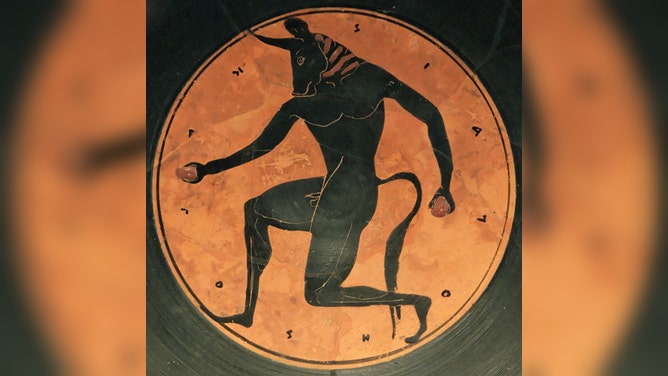
On this kylix, a type of ancient Greek pottery, a figure represents the Minotaur from the Theseus myth. Made by the Painter of London, circa 515 BC. From the National Archaeological Museum of Spain, Madrid.
(GraphicaArtis / Getty Images)
But since the Minotaur has a hunger for human flesh, Minos locks him away from Minoan society in an underground prison with a series of confusing, complex passages — a labyrinth. Minos then begins ordering young men and women into the labyrinth as a way to keep the Minotaur’s bloodlust sated.
According to Rappold, legend has it that a Greek hero named Theseus volunteers to replace one of the men ordered into the labyrinth. Upon Theseus’s arrival to Crete, the daughter of King Minos immediately falls in love with him and helps him prepare to face the Minotaur.
A Brief History of Mazes
Mazes and labyrinths have been found around the ancient world. One of which was made famous by ancient Greek legends, and it served as the setting for a hero's quest.
Various accounts of the story say she either hides a sword for Theseus in the labyrinth, gives him a crown to light his way through the dark passages or gives him a ball of twine to help him find his way back to the labyrinth’s only exit.
Theseus traverses through the winding labyrinth and then slays the Minotaur, a victory that finally ends the curse of King Minos and makes Theseus evermore the hero.
The transformation
The path from being a terrifying feat in legends to a family-friendly activity today is a long one for labyrinths and mazes, and one containing many interpretations.
"I think the use to which people put mazes says a lot about the cultures that use them," said Rappold.
The ancient Greeks saw labyrinths as obstacles to overcome. As seen in their tale about the Greek hero Theseus, the labyrinth is where one finds their way to the center and changes. It’s about going in and fighting the challenge within — a figurative Minotaur — and beating it.
But for the ancient Romans, who created the most clearly maze-like forms in ancient times, the challenge was a form of entertainment. According to Rappold, some Romans put "large-scale labyrinths in mosaics on their floor, probably with the idea that it was a fun kind of party game for their guests to play".
These contrasting purposes were also demonstrated in Medieval Europe. On one hand, monks crawled through mazes on their knees as a meditative experience. On the other hand, elite nobles began to create the first kind of garden mazes, which they used to entertain their guests.
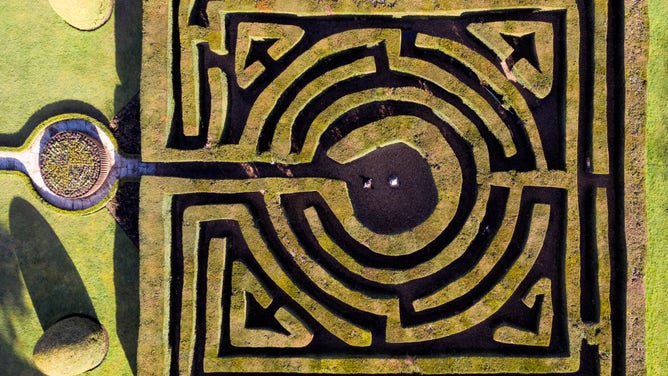
The maze at Hever Castle basks in the late winter sunshine in Hever, United Kingdom. Hever is set 30 miles south of London and was the home to two of Henry VIII wives.
(Chris Gorman / Getty Images)
This gameplay has lasted throughout the centuries that followed, as we see in the popularity of corn mazes in the modern Western world. To Rappold, this may partially be due to an experience that’s been shared every fall for nearly time eternal.
Family tradition
As seen in farms like Colony Pumpkin Patch, many people consider the fall season as the time to experience walking through a corn maze.
"Although now they're just sort of this fun thing that we do," said Rappold. "They themselves link to a really long, kind of cross-humanity tradition of honoring the harvest."
"That's what fall is — the time to harvest."
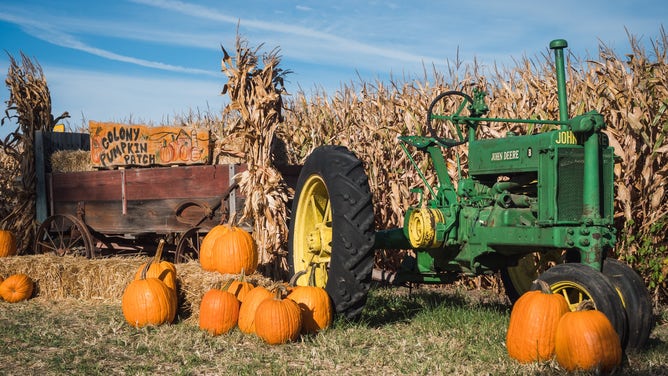
Colony Pumpkin Patch hopes to help visitors reconnect with their rural roots.
(Katie Colony)
The harvest cued the end of one cycle of time and the beginning of another, acting almost like a chapter break between one adventure concluded and another waiting to begin.
"We all started out as farmers somewhere," said Colony. Part of her goal is bringing visitors back to their rural roots and reminding them where their food, fuel and many other things come from.
"Our whole farm is that way. The corn maze specifically even helps with that, too."

A family walks through the Colony Pumpkin Patch corn maze.
(Katie Colony)
The Colony Pumpkin Patch corn maze, with its dreamy, 14-foot tall golden stalks, creates a much friendlier experience than some of its ancient predecessors. But one commonality they share is the experience of an adventure.
To Rappold, "it's really a beautiful thing to see".
